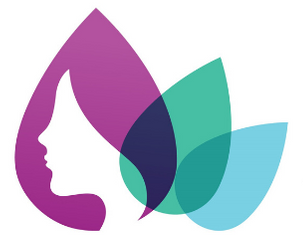|
"Health care workers are still fighting to keep their homes and communities safe." By: Jessica Grose | December 23, 2020 "When I spoke to Dr. Stephanie Whitener, 41, an anesthesia critical care physician and mother of two, the parent-teacher organization at her son’s elementary school was planning an in-person happy hour for teachers. “I spent yesterday trying to rally all the parents I knew in health care to stop it, because of the risk to them, and also to in-person learning,” said Dr. Whitener, who lives in Charleston, S.C.
Though they did end up canceling the happy hour, “it feels like I live in two different realities,” she said, one where people take the virus seriously, and another where they don’t. That dichotomy can make the emotional and psychological toll of treating Covid-19 patients even harder to bear. As this strange and difficult year draws to a close, I wanted to highlight the experiences of parents who are medical workers — and thank them for their service. Like so many other essential workers, they have put their physical and mental well-being on the line in 2020 to do their jobs. These frontline workers are at greater risk for burnout and PTSD than the general population. Some have been separated from their children for weeks at a time, communicating only on Zoom. Like all parents, they’re worried about their own kids, socially, academically and emotionally — while also fretting about the children who are falling behind in school because of the barriers to remote learning, and who may be grieving over family members lost to the virus. And even after more than 300,000 deaths in the United States alone, some health care workers are still trying to convince their communities that the virus is a real threat. “Some of the first deaths I experienced were people only 5 to 10 years older than me, not 70-year-olds,” said Brianna Tremblay, a 36-year-old I.C.U. nurse practitioner in northern New Jersey. She is also the mom of a 3-year-old and pregnant with a baby due in January. Her distress was especially overwhelming in March and April, when the first surge of the virus was hitting the New York City region. “I came home from work every single night and cried with my husband,” Tremblay said. “When a patient would crash, we would spend hours in the room trying to save them, and then have to call the family,” to give them the bad news, Tremblay said. Her I.C.U. had a mortality rate of 80 to 90 percent in March and April for Covid-19 patients. “It truly was a war zone.” Several of the workers I spoke with caught the virus themselves. Cecilia Duran, a 38-year-old midwife in New York City, fell ill in March, when she was 10 weeks pregnant. In addition to fairly intense symptoms — “worse than the flu,” she said — she was also dealing with the nausea and fatigue of early pregnancy. “I was quarantining with my toddler, who was also sick, and my husband was trying to figure out his working from home situation in a small New York apartment,” she said. “It was complete insanity.” Dr. Mary Thomas, a pediatrician in New Jersey, said that she’s much more worried about many of her young patients than she is about her own three children (her whole family already had the virus and recovered). “I’m seeing so much anxiety and depression, and a lot of it has to do with this terrible year,” Dr. Thomas said. “Parents are unemployed or losing money or stressed on top of it, and kids are on screens for hours a day.”
0 Comments
By Pallavi Gogoi| October 28, 2020 "Women are seeing the fabric of their lives unravel during the pandemic. Nowhere is that more visible than on the job. In September, an eye-popping 865,000 women left the U.S. workforce — four times more than men. The coronavirus pandemic is wreaking havoc on households, and women are bearing the brunt of it. Not only have they lost the most jobs from the beginning of the pandemic, but they are exhausted from the demands of child care and housework — and many are now seeing no path ahead but to quit working. Women have made great strides over the years: More women than men are enrolled in college, in medical schools and law schools. The number of women in the workforce even overtook men for a brief period of three months through February this year. But the uncomfortable truth is that in their homes, women are still fitting into stereotypical roles of doing the bulk of cooking, cleaning and parenting. It's another form of systemic inequality within a 21st century home that the pandemic is laying bare." Already, their parents are getting sick and dying. Their kids are falling behind. So along with doing everything else, working becomes impossible.
"The problem is that right now a lot of women don't really have choices, right?" says Martha Gimbel, a labor economist at the nonprofit initiative Schmidt Futures. "They can't send their kids to school. Someone has to supervise the learning. Someone has to deal with the cooking. Someone has to deal with the cleaning, and it's falling onto them. And so they can't make choices that they want to make because they're being restricted in all these ways." Women are back in 1988 The pandemic's female exodus has decidedly turned back the clock by at least a generation, with the share of women in the workforce down to levels not seen since 1988. A growing, prosperous economy depends on a large and committed workforce, with women playing a vital role. If women decide to stay on the sidelines, the very dynamism of the U.S. economy is at risk as many households lose half of their earnings and productive capacity. This trend could even turn back the clock on gender equity, with harmful consequences to society and the economy. Economists are worried. |
Archives
August 2023
Categories
All
|
|
SANDRA RODRIGUEZ-SIUTS, PH.D., LLC
9590 E Ironwood Square Drive, Suite 210 Scottsdale, AZ 85258 Phone: (480) 473-5411 Fax: (480) 436-6900 |
© Copyright 2023 Sandra Rodriguez-Siuts, Ph.D. - All Rights Reserved

 RSS Feed
RSS Feed




